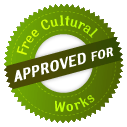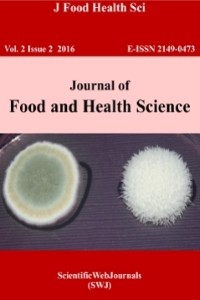ANTIBACTERIAL ACTIVITY OF ROYAL JELLY AND RAPE HONEY AGAINST METHICILLIN-RESISTANT Staphylococcus aureus STRAINS
Abstract
Antimicrobial
resistance of pathogenic bacteria is a growing public health problem.
Methicillin-resistant Staphylococcus
aureus (MRSA) represents a significant burden on healthcare services
because it is involved in severe difficult to treat infections in humans.
Several non-antibiotic approaches regarding the treatment of infections caused
by MRSA as well as of other resistant bacteria have been studied. Since ancient
times royal jelly and honey have been considered both as foods and medicines,
and recently have been identified as potential alternative medicines to treat
bacterial infections, especially of the skin and soft tissue. The aim of the
present study was to investigate the antibacterial effect of honey, royal jelly
and their mixtures against MRSA in vitro.
At least 3 decimal reductions of MRSA count were observed in Tryptone Soy broth
with concentrations of 40% rape honey (RP), 20% and 30% royal
jelly (RJ), 30% RJ:RH (1:100). In general, honey and royal jelly,
individually or in combination, appeared to have a potential as alternative therapeutic agents
against MRSA infections, but clinical studies are needed
for confirmation.
Keywords
References
- Adams, C.J., Boult, C.H., Deadman, B.J., Farr, J.M., Grainger, M.N., Manley-Harris, M. & Snow, M.J. (2008). Isolation by HPLC and characterisation of the bioactive fraction of New Zealand manuka (Leptospermum scoparium) honey. Carbohydrate Research, 343(4), 651-659. doi: 10.1016/j.carres.2007.12.011
- Alreshoodi, F.M. & Sultanbawa, Y. (2015). Antimicrobial Activity of Royal Jelly. Anti-Infective Agents, 13(1), 50-59. doi: 10.2174/2211352513666150318234430
- Alzahrani, H.A., Alsabehi, R., Boukraa, L., Abdellah, F., Bellik, Y. & Bakhotmah, B.A. (2012). Antibacterial and Antioxidant Potency of Floral Honeys from Different Botanical and Geographical Origins. Molecules, 17(9), 10540-10549. doi: 10.3390/molecules170910540
- Balkanska, R., Zhelyazkova, I. & Ignatova, M. (2012). Physico-chemical quality characteristics of royal jelly from three regions of Bulgaria. Agricultural Science and Technology, 4(3), 302-305.
- Bilikova, K., Huang, S.C., Lin, I.P., Simuth, J. & Peng, C.C. (2015). Structure and antimicrobial activity relationship of royalisin, an antimicrobial peptide from royal jelly of Apis mellifera. Peptides, 68, 190-196. doi: 0.1016/j.peptides.2015.03.001
- Blum, M.S., Novak, A.F. & Taber, S. (1959). 10-Hydroxy-A2-decenoic acid, an antibiotic found in royal jelly. Science, 130(3373), 452-¬453. doi: 10.1126/science.130.3373.452
- Bogdanov, S. (1997). Nature and origin of the antibacterial substances in honey. LWT-Food Science and Technology, 30(7), 748-753. doi:10.1006/fstl.1997.0259
- Bogdanov, S., Martin, P. & Lullman, C. (1997). Harmonized methods of the European Honey Commission. Apidologie (Extra Issue), 1-59.
- Boukraa, L., Meslem, A., Benhanifia, M. & Hammoudi, S.M. (2009). Synergistic effect of starch and royal jelly against Staphylococcus aureus and Escherichia coli. The Journal of Alternative and Complementary Medicine, 15(7), 755-757. doi: 10.1089/acm.2008.0483
- Boukraa, L., Niar, A., Benbarek, H. & Benhanifia M. (2008). Additive Action of Royal Jelly and Honey Against Staphylococcus aureus. Journal of Medicinal Food, 11(1), 190-192. doi: 10.1089/jmf.2007.567
- Brady, N.F., Molan, P.C. & Harfoot, C.G. (1996). The sensitivity of dermatophytes of manuka honey and other honey. Pharmacy and Pharmacology Communications, 2(10), 471-473. doi: 10.1111/j.2042-7158.1996.tb00540.x
- Cooper, R.A., Halas, E. & Molan, P.C. (2002). The efficacy of honey in inhibiting strains of Pseudomonas aeruginosa from infected burns. Journal of Burn Care & Rehabilitation, 23(6), 366-370.
- Dinkov, D., Stratev, D. & Balkanska, R. (2014). In vitro atibacterial activity of royal gelly against pathogen Escherichia coli. Veterinary Journal of Republic of Srpska (Banja Luka), 14(1), 14-25. doi: 10.7251/VETJ1401002D.
- Dustmann, J.H. (1979). Antibacterial effect of honey. Apiacta, 14(1), 7-11.
- Fontana, R., Mendes, M.A., De Souza, B.M., Cono, K., Cesar, L.M., Maspina, O. & Palma, M.S. (2004). Jelleines: a family of antimicrobial peptides from the Royal Jelly of honeybees (Apis mellifera). Peptides, 25(6), 919-928. doi: 10.1016/j.peptides.2004.03.016
- Fujiwara, S., Imai, J., Fujiwara, M., Yaeshima, T., Kawashima, T. & Kobayashi, K. (1990). A potent antibacterial protein in royal jelly. Purification and determination of the primary structure of royalisin. The Journal of Biological Chemistry, 265(19), 11333-11337.
- Kujumgiev, A., Tsvetkova, I., Serkedjieva, Yu., Bankova, V., Christov, R. & Popov, S. (1999). Antibacterial, Antifungal and Antiviral Activity of Propolis of Different Geographic Origin. Journal of Ethnopharmacology, 64(3), 235-240. doi: 10.1016/S0378-8741(98)00131-7
- Marcucci, M.C., Ferreres, F., Garcia-Viguera, C., Bankova, V.S., De Castro, S.L., Dantas, A. P., Valente, P.H.M. & Paulino, N. (2001). Phenolic compounds from Brazilian propolis with pharmacological activities. Journal of Ethnopharmacology, 74(2), 105-112. doi: 10.1016/S0378-8741(00)00326-3
- Mavric, E., Wittmann, S., Barth, G. & Henle, T. (2008). Identification and quantification of methylglyoxal as the dominant antibacterial constituent of Manuka (Leptospermum scoparium) honeys from New Zealand. Molecular Nutrition & Food Research, 52(4), 483-489. doi: 10.1002/mnfr.200700282
- Melliou, E. & Chinou, I. (2005). Chemistry and bioactivity of royal jelly from Greece. Journal of Agricultural and Food Chemistry, 53(23), 8987-8992. doi: 10.1021/jf051550p
- Molan, P.C. (1992). The antibacterial activity of honey: 1. The nature of the antibacterial activity. Bee World, 73(1), 5-28. http://hdl.handle.net/10289/2094
- Molan, P.C. (1997). Honey as an antimicrobial agent. In A. Mizrahi & Y. Lensky (Eds.), Bee Products. Properties, Applications, and Apitherapy (pp. 27-37). New York, Springer: Science+Business Media.
- Oddo, L.P., Piana, L., Bogdanov, S., Bentabol, A., Gotsiou, P., Kerkvied, J., Martin, P., Morlot, M., Valbuena, A.O., Ruoff, K. & von der Ohe, K. (2004). Botanitical species giving unifloral honey in Europe. Apidologie, 35, 82-93. doi: 10.1051/apido:2004045
- Patton, T., Barrett, J., Brennan, J. & Moran, N. (2006). Use of a spectrophotometric bioassay for determination of microbial sensitivity to manuka honey. Journal of Microbiological Methods, 64(1), 84-95. doi: 10.1016/j.mimet.2005.04.007
- Sesta, G. (2006). Determination of sugars in royal jelly by HPLC. Apidologie, 37(1), 84-90. doi: 10.1051/apido:2005061
- Sherlock, O., Dolan, A., Athman, R., Power, A., Gethin, G., Cowman, S. & Humphreys, H. (2010). Comparison of the antimicrobial activity of Ulmo honey from Chile and Manuka honey against methicillin-resistant Staphylococcus aureus, Escherichia coli and Pseudomonas aeruginosa. BMC Complementary and Alternative Medicine, 10: 47. doi: 10.1186/1472-6882-10-47
- Stratev, D., Vashin, I., Balkanska, R. & Dinkov, D. (2015). Antibacterial activity of royal jelly and rape honey against Aeromonas hydrophila (ATCC 7965). Journal of Food and Health Science, 1(2), 64-74. doi: 10.3153/JFHS15006
- Taormina, P. J., Niemira, B. A. & Beuchat, L. R. (2001). Inhibitory activity of honey against food-borne pathogens as influenced by the food-borne pathogens as influenced by the presence of hydrogen peroxide and level of antioxidant power. International Journal of Food Microbiology, 69(3), 217-225. doi: 10.1016/S0168-1605(01)00505-0
- von der Ohe, W., Piana, M. L., Morlot, M. & Martin, P. (2004). Harmonized methods of melissopalynology. Apidologie, 35, 18-25. doi: 10.1051/apido:2004050
- WHO (World Health Organization). (2014). Antimicrobial resistance: Global Report on Surveillance. Retrieved from http://apps.who.int/iris/bitstream/10665/112642/1/9789241564748_eng.pdf
Abstract
References
- Adams, C.J., Boult, C.H., Deadman, B.J., Farr, J.M., Grainger, M.N., Manley-Harris, M. & Snow, M.J. (2008). Isolation by HPLC and characterisation of the bioactive fraction of New Zealand manuka (Leptospermum scoparium) honey. Carbohydrate Research, 343(4), 651-659. doi: 10.1016/j.carres.2007.12.011
- Alreshoodi, F.M. & Sultanbawa, Y. (2015). Antimicrobial Activity of Royal Jelly. Anti-Infective Agents, 13(1), 50-59. doi: 10.2174/2211352513666150318234430
- Alzahrani, H.A., Alsabehi, R., Boukraa, L., Abdellah, F., Bellik, Y. & Bakhotmah, B.A. (2012). Antibacterial and Antioxidant Potency of Floral Honeys from Different Botanical and Geographical Origins. Molecules, 17(9), 10540-10549. doi: 10.3390/molecules170910540
- Balkanska, R., Zhelyazkova, I. & Ignatova, M. (2012). Physico-chemical quality characteristics of royal jelly from three regions of Bulgaria. Agricultural Science and Technology, 4(3), 302-305.
- Bilikova, K., Huang, S.C., Lin, I.P., Simuth, J. & Peng, C.C. (2015). Structure and antimicrobial activity relationship of royalisin, an antimicrobial peptide from royal jelly of Apis mellifera. Peptides, 68, 190-196. doi: 0.1016/j.peptides.2015.03.001
- Blum, M.S., Novak, A.F. & Taber, S. (1959). 10-Hydroxy-A2-decenoic acid, an antibiotic found in royal jelly. Science, 130(3373), 452-¬453. doi: 10.1126/science.130.3373.452
- Bogdanov, S. (1997). Nature and origin of the antibacterial substances in honey. LWT-Food Science and Technology, 30(7), 748-753. doi:10.1006/fstl.1997.0259
- Bogdanov, S., Martin, P. & Lullman, C. (1997). Harmonized methods of the European Honey Commission. Apidologie (Extra Issue), 1-59.
- Boukraa, L., Meslem, A., Benhanifia, M. & Hammoudi, S.M. (2009). Synergistic effect of starch and royal jelly against Staphylococcus aureus and Escherichia coli. The Journal of Alternative and Complementary Medicine, 15(7), 755-757. doi: 10.1089/acm.2008.0483
- Boukraa, L., Niar, A., Benbarek, H. & Benhanifia M. (2008). Additive Action of Royal Jelly and Honey Against Staphylococcus aureus. Journal of Medicinal Food, 11(1), 190-192. doi: 10.1089/jmf.2007.567
- Brady, N.F., Molan, P.C. & Harfoot, C.G. (1996). The sensitivity of dermatophytes of manuka honey and other honey. Pharmacy and Pharmacology Communications, 2(10), 471-473. doi: 10.1111/j.2042-7158.1996.tb00540.x
- Cooper, R.A., Halas, E. & Molan, P.C. (2002). The efficacy of honey in inhibiting strains of Pseudomonas aeruginosa from infected burns. Journal of Burn Care & Rehabilitation, 23(6), 366-370.
- Dinkov, D., Stratev, D. & Balkanska, R. (2014). In vitro atibacterial activity of royal gelly against pathogen Escherichia coli. Veterinary Journal of Republic of Srpska (Banja Luka), 14(1), 14-25. doi: 10.7251/VETJ1401002D.
- Dustmann, J.H. (1979). Antibacterial effect of honey. Apiacta, 14(1), 7-11.
- Fontana, R., Mendes, M.A., De Souza, B.M., Cono, K., Cesar, L.M., Maspina, O. & Palma, M.S. (2004). Jelleines: a family of antimicrobial peptides from the Royal Jelly of honeybees (Apis mellifera). Peptides, 25(6), 919-928. doi: 10.1016/j.peptides.2004.03.016
- Fujiwara, S., Imai, J., Fujiwara, M., Yaeshima, T., Kawashima, T. & Kobayashi, K. (1990). A potent antibacterial protein in royal jelly. Purification and determination of the primary structure of royalisin. The Journal of Biological Chemistry, 265(19), 11333-11337.
- Kujumgiev, A., Tsvetkova, I., Serkedjieva, Yu., Bankova, V., Christov, R. & Popov, S. (1999). Antibacterial, Antifungal and Antiviral Activity of Propolis of Different Geographic Origin. Journal of Ethnopharmacology, 64(3), 235-240. doi: 10.1016/S0378-8741(98)00131-7
- Marcucci, M.C., Ferreres, F., Garcia-Viguera, C., Bankova, V.S., De Castro, S.L., Dantas, A. P., Valente, P.H.M. & Paulino, N. (2001). Phenolic compounds from Brazilian propolis with pharmacological activities. Journal of Ethnopharmacology, 74(2), 105-112. doi: 10.1016/S0378-8741(00)00326-3
- Mavric, E., Wittmann, S., Barth, G. & Henle, T. (2008). Identification and quantification of methylglyoxal as the dominant antibacterial constituent of Manuka (Leptospermum scoparium) honeys from New Zealand. Molecular Nutrition & Food Research, 52(4), 483-489. doi: 10.1002/mnfr.200700282
- Melliou, E. & Chinou, I. (2005). Chemistry and bioactivity of royal jelly from Greece. Journal of Agricultural and Food Chemistry, 53(23), 8987-8992. doi: 10.1021/jf051550p
- Molan, P.C. (1992). The antibacterial activity of honey: 1. The nature of the antibacterial activity. Bee World, 73(1), 5-28. http://hdl.handle.net/10289/2094
- Molan, P.C. (1997). Honey as an antimicrobial agent. In A. Mizrahi & Y. Lensky (Eds.), Bee Products. Properties, Applications, and Apitherapy (pp. 27-37). New York, Springer: Science+Business Media.
- Oddo, L.P., Piana, L., Bogdanov, S., Bentabol, A., Gotsiou, P., Kerkvied, J., Martin, P., Morlot, M., Valbuena, A.O., Ruoff, K. & von der Ohe, K. (2004). Botanitical species giving unifloral honey in Europe. Apidologie, 35, 82-93. doi: 10.1051/apido:2004045
- Patton, T., Barrett, J., Brennan, J. & Moran, N. (2006). Use of a spectrophotometric bioassay for determination of microbial sensitivity to manuka honey. Journal of Microbiological Methods, 64(1), 84-95. doi: 10.1016/j.mimet.2005.04.007
- Sesta, G. (2006). Determination of sugars in royal jelly by HPLC. Apidologie, 37(1), 84-90. doi: 10.1051/apido:2005061
- Sherlock, O., Dolan, A., Athman, R., Power, A., Gethin, G., Cowman, S. & Humphreys, H. (2010). Comparison of the antimicrobial activity of Ulmo honey from Chile and Manuka honey against methicillin-resistant Staphylococcus aureus, Escherichia coli and Pseudomonas aeruginosa. BMC Complementary and Alternative Medicine, 10: 47. doi: 10.1186/1472-6882-10-47
- Stratev, D., Vashin, I., Balkanska, R. & Dinkov, D. (2015). Antibacterial activity of royal jelly and rape honey against Aeromonas hydrophila (ATCC 7965). Journal of Food and Health Science, 1(2), 64-74. doi: 10.3153/JFHS15006
- Taormina, P. J., Niemira, B. A. & Beuchat, L. R. (2001). Inhibitory activity of honey against food-borne pathogens as influenced by the food-borne pathogens as influenced by the presence of hydrogen peroxide and level of antioxidant power. International Journal of Food Microbiology, 69(3), 217-225. doi: 10.1016/S0168-1605(01)00505-0
- von der Ohe, W., Piana, M. L., Morlot, M. & Martin, P. (2004). Harmonized methods of melissopalynology. Apidologie, 35, 18-25. doi: 10.1051/apido:2004050
- WHO (World Health Organization). (2014). Antimicrobial resistance: Global Report on Surveillance. Retrieved from http://apps.who.int/iris/bitstream/10665/112642/1/9789241564748_eng.pdf
Details
| Journal Section | Articles |
|---|---|
| Authors | |
| Publication Date | February 10, 2016 |
| Submission Date | January 13, 2015 |
| Published in Issue | Year 2016 Volume: 2 Issue: 2 |
Journal is licensed under a
CreativeCommons Attribtion-ShareAlike 4.0 International Licence 


Diamond Open Access refers to a scholarly publication model in which journals and platforms do not charge fees to either authors or readers.
Open Access Statement:
This is an open access journal which means that all content is freely available without charge to the user or his/her institution. Users are allowed to read, download, copy, distribute, print, search, or link to the full texts of the articles, or use them for any other lawful purpose, without asking prior permission from the publisher or the author. This is in accordance with the BOAI definition of open access.
Archiving Policy:
Archiving is done according to ULAKBİM "DergiPark" publication policy (LOCKSS).

